So, a totally-predictable thing happened on the way to the conclusion of our five-part series. Jess and I decided it would be really cool to dive deep into Commander 2015, and we took on a whole bunch of the new cards – first in a two-part series where we rebuilt all five of the decks on a shoestring budget, then in a five-part series revolving around putting the five new legendary creatures at the helm of readers’ decks. By chance and happenstance, just by the rhythm of Jess and I alternating, I was going to end up pulling three of the new commanders while she only got two – but that seemed to work out happily enough, with me starting off with a hard mono-red build featuring Feldon, Jess embracing a nautical poem-based Geralf deck, and then I got to work on a Titania deck I’m planning on building for myself while Jess got to finish with a Wednesday Addams-themed Gisa deck. That left me Jazal Goldmane going last, as I’d expected… and brought with it a problem, as not a single reader submitted a Jazal deck for us to work on over the past month.
I kind of predicted this a month ago, because let’s look at this guy, right?

Nobody wanted to build a white deck centering around a commander who starts with solid stats and then has an activated ability you can use multiple times
to Marton Stromgald your opponents to death. This must be a pretty tough room, because it’s not like he’s got bad stats or is a bad card – I guess he just
wasn’t interesting enough to anybody. So I get to build him however I want, and that means I’m going to show everyone how wrong they were when they decided
he was boring, underpowered, or just not good enough to helm a deck. Jazal can and will kick your ass, so let’s get to it!
There are obvious things you can do with Jazal to try and min-max his power stats – mostly to do with token creatures, as that is the easiest way to ramp
his activated ability up to stratospheric levels of damage. White can be pretty darn boring that way, after all, since it is good at creating token
creatures and is full of pump effects – but that’s boring, so Jazal was taking me in a bit of a different direction. Jazal likes it when you keep a lot of
creatures in play, and rather than not care about the nature of these warm bodies, I wanted to build a deck that was rewarded by having a fair number of
creatures in play… and decided that I would try to play tons of rule-setting creatures, so having a decent-sized army would mean I was harassing my
opponents’ ability to play Magic on their own terms. Usually a “griefer” deck or “chaos” deck that tries to do this is based on blue and/or red
enchantments plus a few key artifacts – I’m looking at you, Knowledge Fountain – and these cards don’t really add to the table, they just go with a “chaos
means you can’t do what you want, the outcome is random!” gameplan that is not much of a plan at all. (It’s more of a tactic, which may be totally valid
but should not be confused with a plan.)
With the permanents Jazal was incentivizing us to keep in play also being the thing that was snarling up the boardstate, we at least have an
actual plan – create mayhem, turn sideways. We begin with the lands:
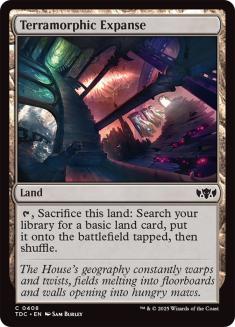
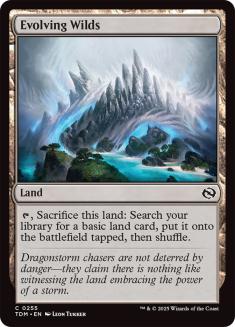
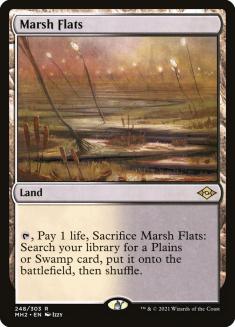
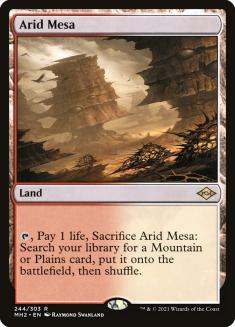
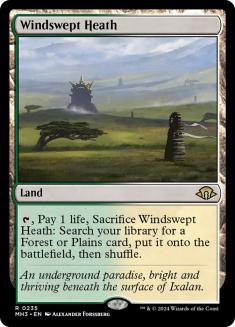
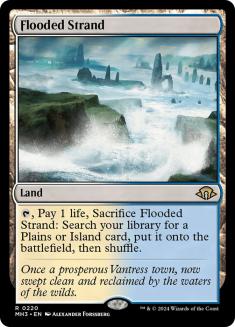
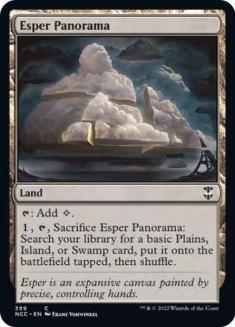
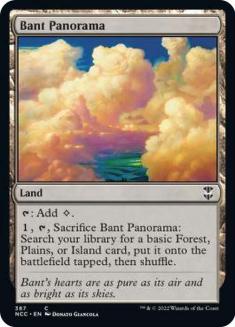
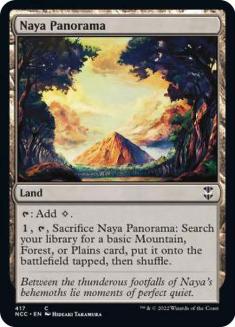
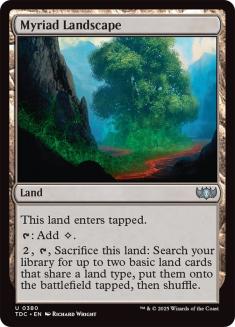
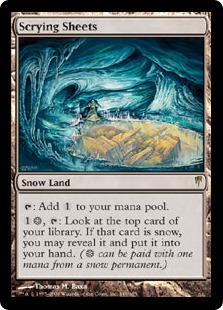
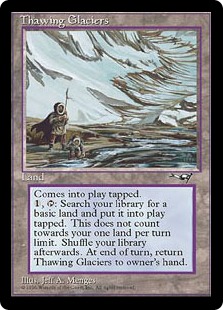
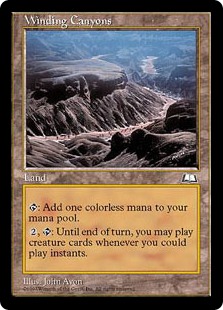
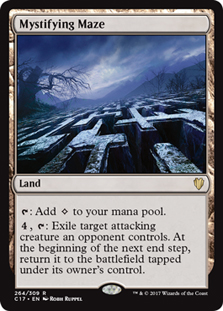
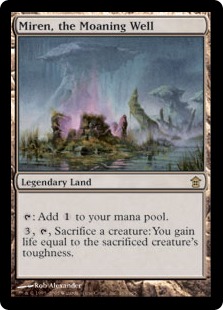
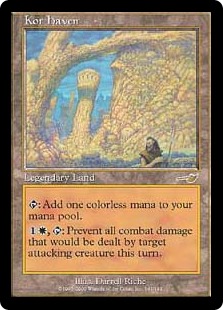
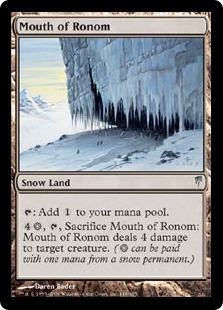
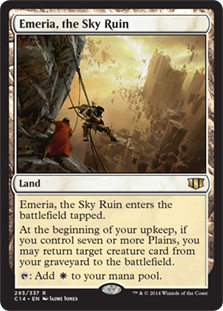
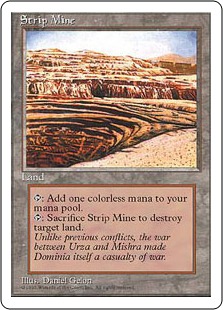
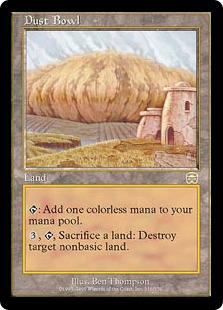
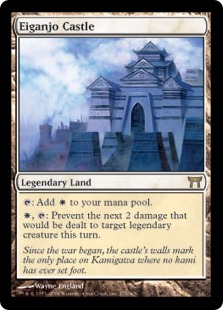
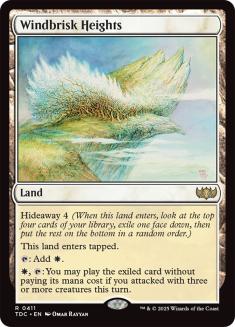
…and fifteen Snow-Covered Plains.
I really like utility lands, which white happens to give us in abundance if we are interested in them. Going Snow lets us add a little bit more on top of what I’m intending to be a strong Crucible of Worlds package, allowing us to get extra card advantage turn after turn by building up our mana supply for free and potentially re-using Mouth of Ronom to pick off opposing creatures in a deck that we’re generally intending to be light on removal and heavy on permanents… and Scrying Sheets is underrated, even though we know it’s good, so I’m pleased to be able to add that more-or-less for free in a deck that will regularly be able to shuffle if you don’t like the top card. White’s defense lets us add Kor Haven next to the generally-useful Mystifying Maze, which again allows us to get away with being a bit lighter on removal – combat tricks in our manabase make it less important to have one in-hand since you can always at least theoretically affect the board if you want to.
I like a manabase that has a lot of bells and whistles to it, just in general, so that later on in the game I have things I can spend mana on to some benefit – and, of course, I just love Winding Canyons, which happens to get even better with the weird array of rules-setting creatures I find myself adding to the deck, so there’s that too.
We visit only briefly with the artifacts, as makes sense when you see the first one:
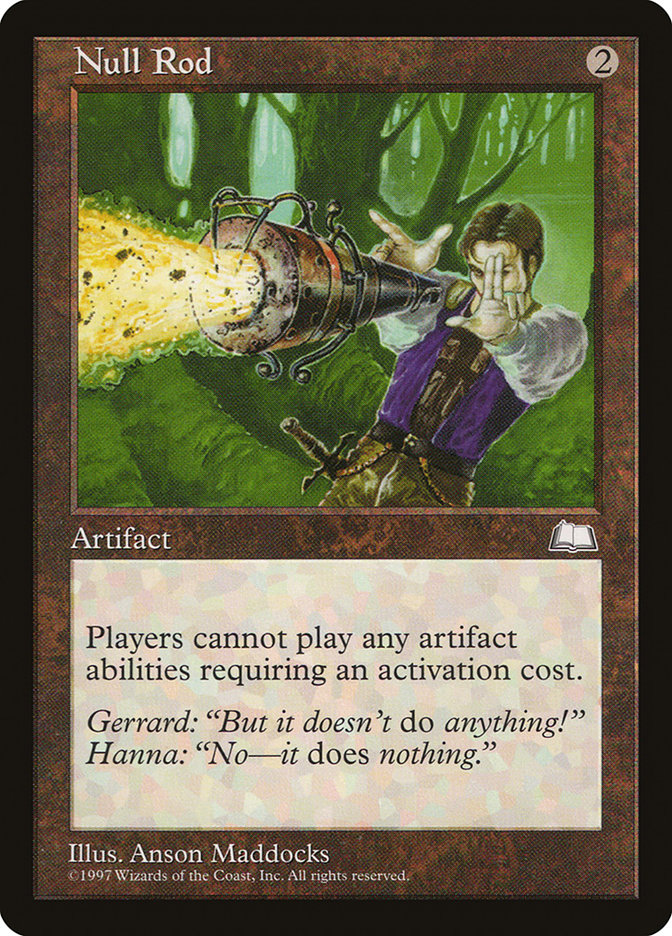
I wasn’t kidding when I said I wanted to mess with the rules, and most people include “my Sol Ring will tap for mana if I want it to” as a rule. It will admittedly screw with a few of my artifacts as well – but I’m okay with that, especially since the two most important artifacts I’m about to include don’t have activated abilities, and thus, work just fine still alongside it. Those are:
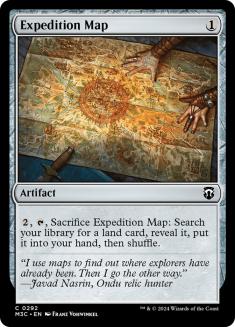
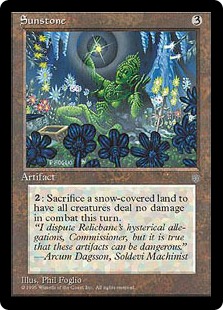
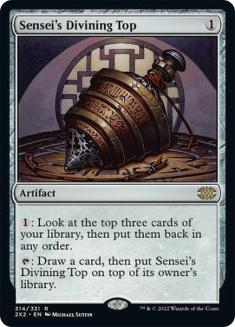
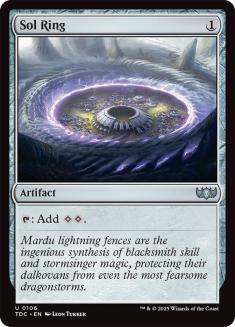
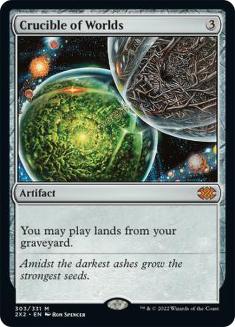
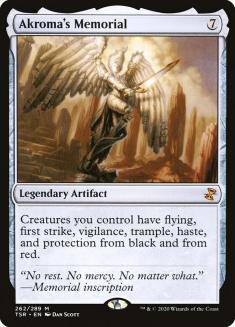
Sol Ring and Sensei’s Divining Top are generic inclusions of the “basically too good not to play variety,” though I have been known to not go with them as
my fickle mood requires, while Expedition Map will increase my access to the best my manabase has to offer, and Sunstone is just interesting and
potentially can shape the rules of a game in your favor, and thus, plays along with the theme. Crucible of Worlds is pretty central to my overarching plan
to get something for free as often as possible, enough so that it’s worth playing Enlightened Tutor even if I had no other juicy targets – but I do, with
Akroma’s Memorial serving as the only way to give the team trample when limited by our color identity. It happens to do a few other things besides, but
it’s mostly there so that Jazal’s ability will make the team actually usefully big instead of allowing chump-blocks to save the day.
Let’s move on to the real meat of the deck, those rules-setting creatures that are intended to be so vital at harassing our opponents’ strategy:
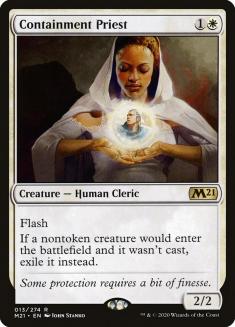
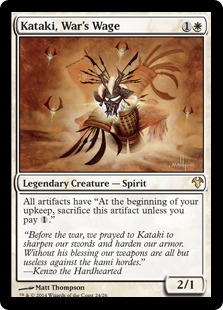
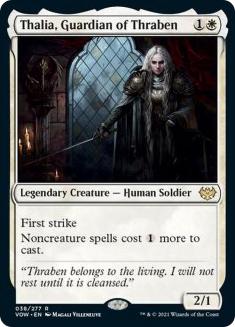
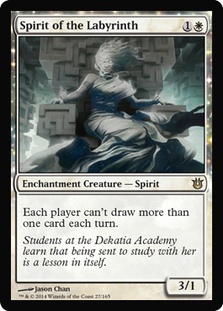
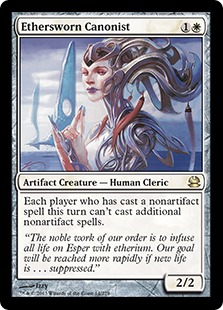
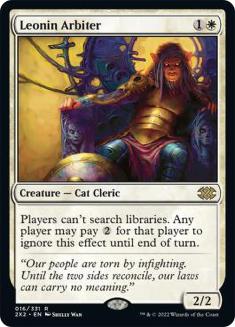
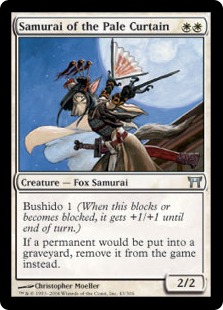
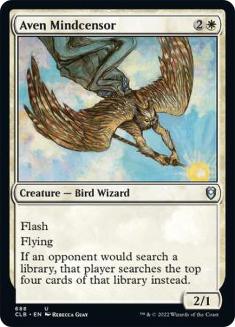
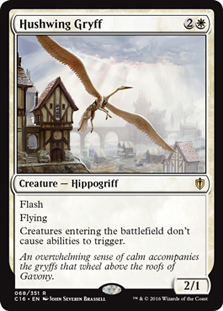
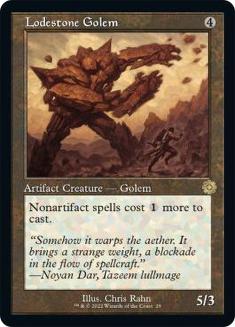
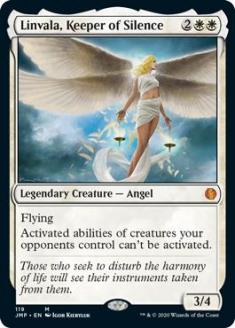
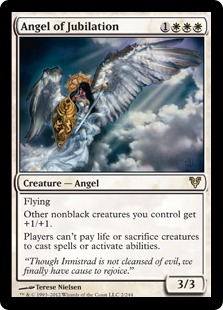
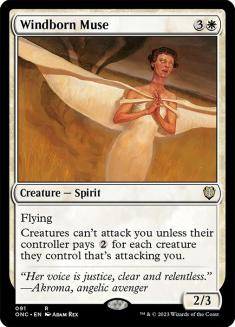
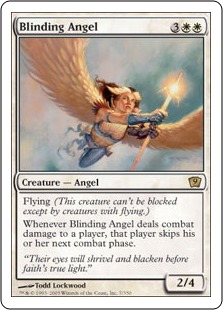
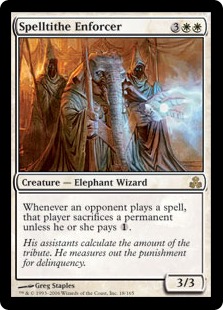
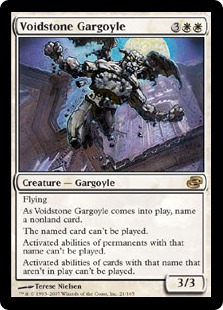
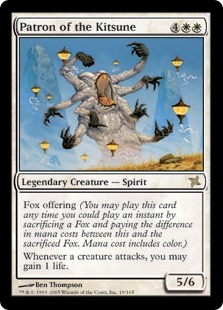
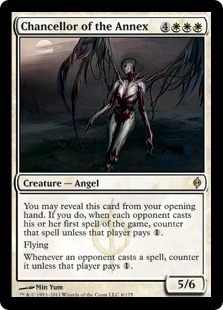
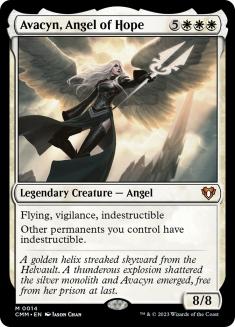
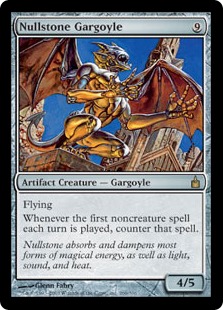
While there are more rules-setting-type creatures we could have included, I wanted to keep the deck on something like a mana curve, since the realistic
hope is to play a two-drop, a three-drop, and Jazal on turn 4 in every game we play so we can start beating down and using Jazal’s pump ability as early as
turn 5 if somehow that is advantageous. Having twenty creatures that tended towards the low end and had useful abilities that alter the flow of the game
was made all the easier by finding out that for some reason many of these creatures tend to either be two-drops or have flying – a whopping seven two-drops
were worth playing here for their value at screwing up our opponents’ plans in one capacity or another, and most of the creatures at four or more mana had
evasion to make them a bit more valuable to us.
Some of these rules-shifts are weak – Patron of the Kitsune, for example, changes “the rule” to “you have Orim’s Prayer in play,” which wouldn’t really be
worthwhile except for the fact that it comes on a decent body as well – and a few of the top cards are more expensive than I might like, specifically
Nullstone Gargoyle costing a whopping nine mana for a powerful rule effect attached to a fairly undersized flier by modern consideration. Creature power
creep has definitely occurred at the top end since then, as you can see just by going one mana lower and getting Avacyn, Angel of Hope to completely
protect your board and give you an 8/8 flier.
Twenty creatures is not enough to draw them consistently in your opening hand in sufficient quantity, and since I want to make the early drops regularly
I’d like some more two-, three- and five-drop creatures that will do good work for us – we can skimp on fours because of Jazal, though we’ll include any
that naturally suggest themselves rather than try to intentionally leave a hole in the mana curve and presume our commander will fill it every time.
I only saw fit to include two one-drops: Serra Ascendant, for sheer power reasons, and Weathered Wayfarer for bonus card advantage and land-tutoring. I’d
rather skip my one-drop than play even the most efficient of attacking creatures, since they’ll quickly get sorely outclassed by even low-quality cardboard
out of our opponents’ hands, but Serra Ascendant attacking on turn 2 as a 6/6 is just stupid and cannot be ignored. A “mere” top one-drop should be able to
swing for two, maybe three, but I’d be willing to pay six mana to get a 6/6 flier with lifelink; and because this card was not designed with
Commander in mind, I get to keep that other five mana and deploy this on the first turn if I start with it.
At the two-drop, we have a good number already and they all solidly mess with our opponents’ ability to play their game however they might like. Anything
we’re adding here will need to fill a strategic void or be just too awesome to overlook, and we have one inclusion for each of those two categories.
Eight-and-a-half-Tails is the too-awesome inclusion; I wasn’t interested in including Mother of Runes as a one-drop despite her being high-powered enough
to be actually competitive in Legacy still, but 8.5 is Mother of Runes with a turbocharger. 8.5 requires mana instead of tapping, it’s true, but it can
also be used on the same turn you play it and multiple times a turn, so it scales impressively for a two-drop and remains highly impactful even in
the later stages of the game. And the strategic inclusion is Jotun Grunt… it doesn’t quite “set a rule” so it wasn’t included in the list above,
but the Grunt does help keep our opponents from abusing their graveyards and recycling all of their cards… something we’re otherwise quite
lacking in the ability to contain, so it’s a strong addition to the deck especially since it comes down as a cheap 4/4 body far sooner than you’d expect.
Our three-drop is actually quite light – we only had two rules-setting creatures in that spot on the curve, so we have had to over-represent our two-drops
since we’ll often want to have drawn two of them instead of just the one. There are two more three-drops I felt were too good to leave out, which is kind
of funny since they’re both three-mana 1/1s, but their abilities are so strong that they’ll have a potent impact. Mirror Entity gives us another way
besides Jazal to turn our team large/large, while Preacher can do good work controlling the opponents’ board bit by bit. If we draw our copy of Miren, he
gets even better – and we have a few ways to tutor for it, so Preacher will be even stronger than its already-strong ability suggests.
At the four-drop, I again had two more additions, one that feels sort of like a rules-setting creature but has weird text and mostly difficult applications
and another that just works too well with the rest of our cards to overlook. Emeria Angel is a solid token-producer that works well with Jazal, but that
wasn’t quite good enough to get a whole host of other cards included – it only really feels on-theme because of the fetchland/Crucible plan of action,
while Seht’s Tiger can be a catch-all for weird problems you never knew you had. About to get Cruel Ultimatumed? Kitty! Lethal damage coming your way?
Kitty! Need to break a Curse? Kitty!
Five mana already somewhat saw me breaking the rules – Blinding Angel has to actually connect for combat damage before a rules-setting ability takes place
– but there are two more drops I want to add here as well, in World Queller and Avacyn, Guardian Angel. The newer, cheaper Avacyn serves sort of like an
Eight-and-a-half-Tails strapped to a decent-sized flier, and can even act as a Fog-machine if that is what is needed… but stranger still, both of these
abilities can be put to work benefitting an opponent as well, letting you get freebie political points in addition to protecting you and your stuff. World
Queller can work to keep problem permanents off the board and can take advantage of the fact that the deck lacks several permanent types that World Queller
can effect – we’re very light on artifacts and have no planeswalkers, plus we have a few enchantments (as we’ll soon see) that we might not need to keep in
play very long to have their full effect. You can always sacrifice creatures too, if you think you’ll get a better deal than the opponents do – like if
we’re sac-ing two-drops while the opponents are losing heavy hitters, or losing a token while everyone else actually loses a card. (And then there’s
Preacher, for added fun and value.)
We have five more additions at the top of our mana curve, picked for their ability to affect combat or act as removal – and it doesn’t hurt that most of
them fly too, to keep their bodies relevant later in the game.
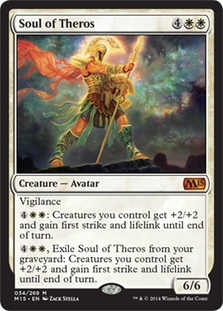
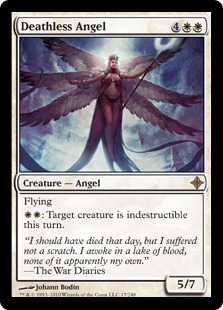
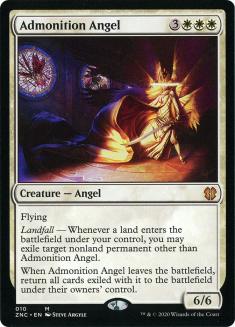
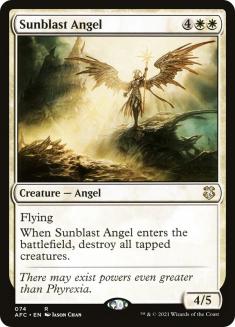
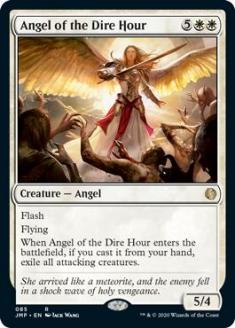
Supporting Cats
But you can’t just rely on decent creatures on a solid mana curve plus your Cat Commander to win. We have room for twenty spells, and since we’re generally light on removal, we’re going to have to make sure we use those slots well to solve problems. White has very strong rules-setting enchantments too, not just creatures – mostly that has earned it a reputation for being a strong sideboarding color in Legacy and Modern, but here we’re going to use those “hoser” enchantments to go with our rules-setting creatures and make our opponents just generally unhappy even more than before. Their cards will all still do stuff, they can cast them and all that, but because we’re working to actively shift the rules of the table away from the mundane rules of the Commander format, those cards may not be as good as they’d thought when they put them in their deck (and thus, we should have sufficient time to beat them with an assortment of Cat Commanders, legendary Humans, and beefy Angels).
First we’ll supplement our removal spells:
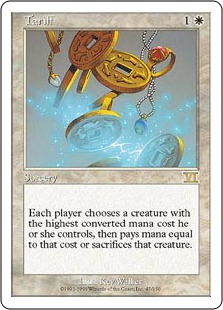
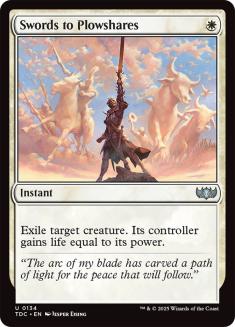
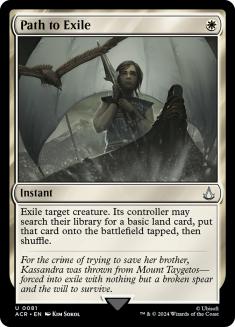
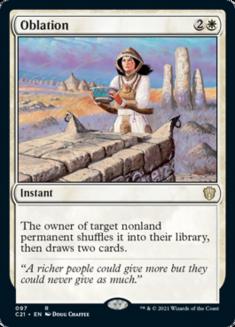
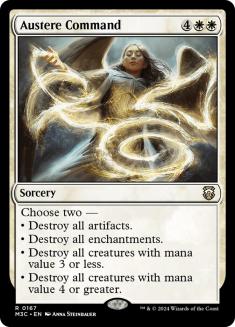
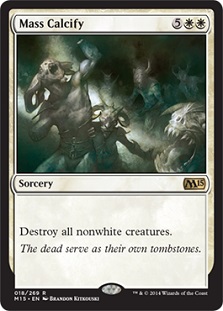
Mass Calcify usually gets a laugh, but here it’ll actually do solid work – and Tariff I mostly wanted to resurrect because of how generally inexpensive our creatures are, meaning we’ll usually get a cheap deal protecting our most expensive threat, while our opponents will be more likely to get caught flat-footed and lose a big threat. The other four are added solely for their efficiency within the format, though Austere Command is made a bit better than usual here by the fact that we have good two- and three-drop creatures it can leave in the play while Wrathing the bigger ones. Usually it’s pulling off that trick with token creatures, but for us it is sparing us real cardboard that we actually care about since the two-drop is strongly represented in this deck.
Next we have our support spells:
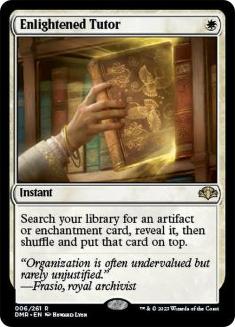
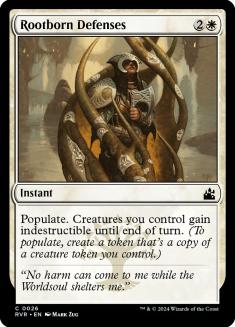
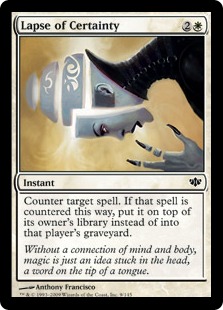
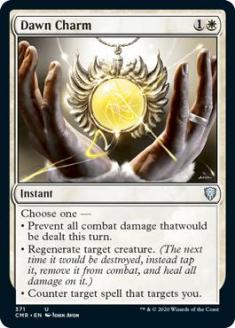
I wanted some protection from mass removal and anything counterspell-like I could get my hands on, so that we’re not just playing a dumb beatdown deck and subject to the whimsy of whatever the “real” decks feel like doing. And much though I tend to hate Enlightened Tutor, here it actually works because we have strong artifacts and enchantments that will give us far more than a card’s worth of value to be able to access on demand, so I don’t mind going down a card in order to find the right powerful silver bullet to work against an opponent’s strategy. Dawn Charm is part-countermagic and part-Fog, with many traits in common with Seht’s Tiger; it may take some waiting around to find just the right use for it, but there will always be at least something worthwhile you can do since a Fog effect tends to have value at most tables even if it’s not what I tend to describe as “an efficient card for the format.” I like having them around when they’re right and/or have other uses, and Dawn Charm has grown on me ever since I started including it in Sunforger-based builds.
And the rest of the space will go to power enchantments. The first three help by adding a light token theme; I thought it was boring in the broader sense to focus on Jazal + Tokens as seemed so immediately obvious, but I have no problem adding the repetitive token-makers since they scale in utility to match the phase of the game we’re in while Raise the Alarm is downright embarrassing past turn 2.
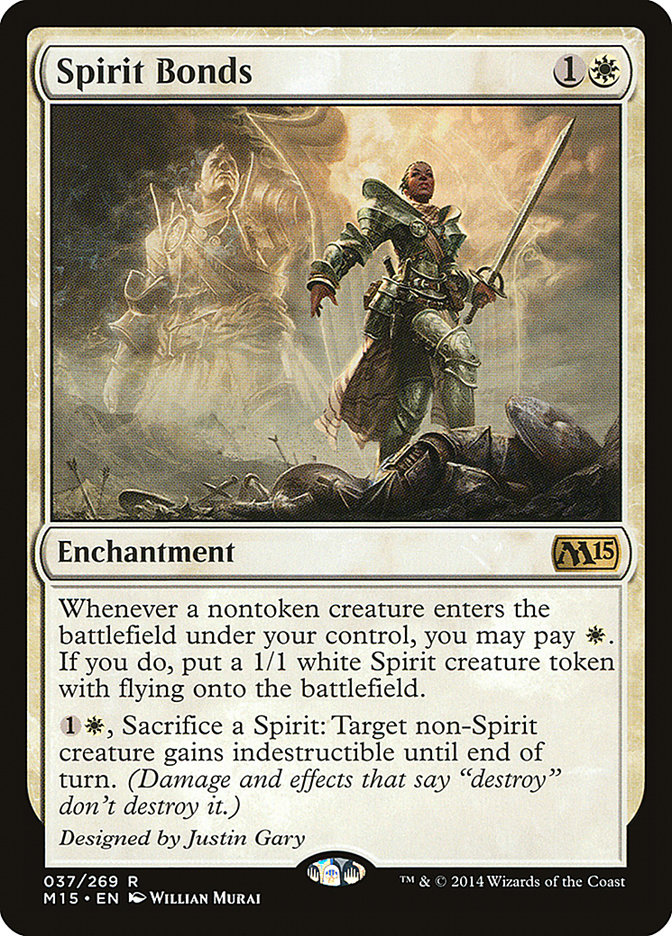


More tokens than this and I’d be quite bored, but this is just enough to work out sometimes without dominating the flavor of the deck. I particularly like how Spirit Bonds provides utility instead of just tokens, which makes up for the fact that it is the hardest of the three to put to work effectively later in the game.
Everything else is going to shift the rules, starting with how combat works:
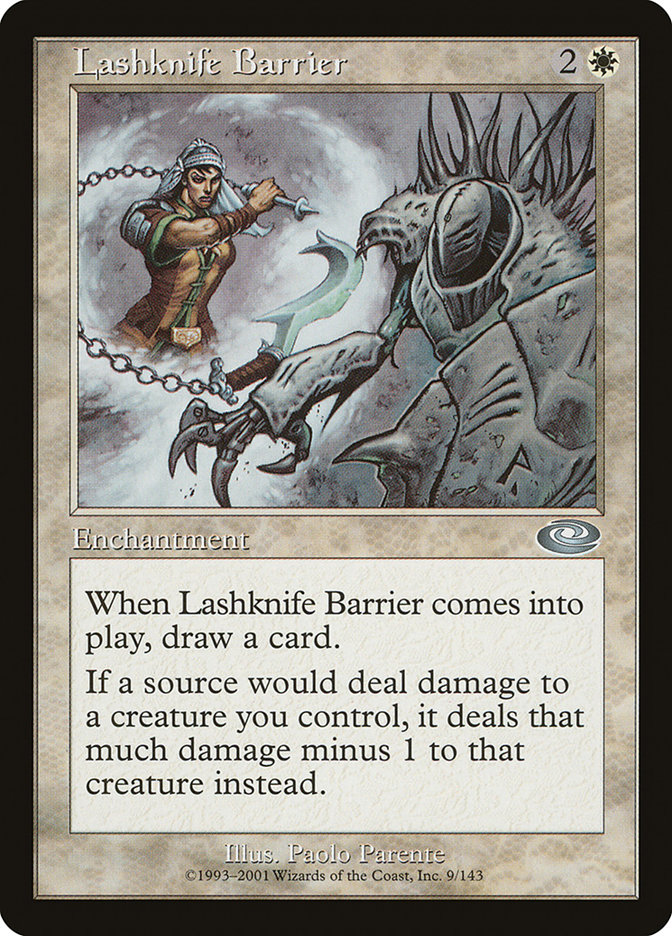
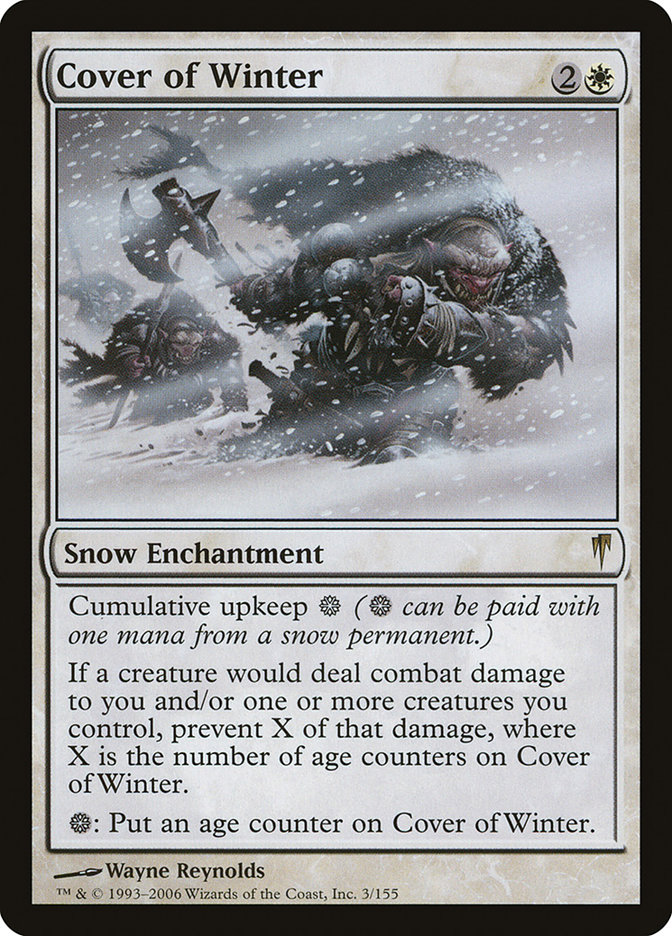
Once again we get paid somewhat for going Snow when we didn’t have to, using a card everyone will have to read and then re-read because they’ve never seen it before and probably can’t believe they’re about to lose to it. Lashknife Barrier has a small effect but is a cantrip, making up in efficiency what it lacks in raw power, while its bigger version Cover of Winter asks for a lot of mana to make it work just right but protects you in addition to your creatures once you’ve made that investment of time and/or snow mana.
Our last five choices are somewhat more traditional, though one of them is still going to be a quirky odd card pretty much no one plays but which I included because I just generally love it (and love using it whenever it fits). Presumably you’ll see right away which one of these things is not like the others…
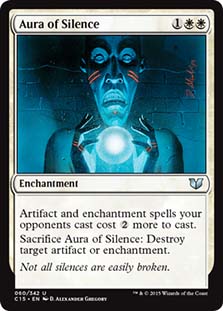
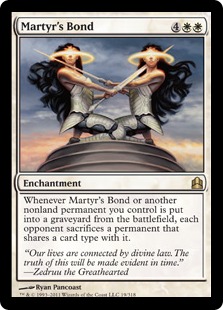
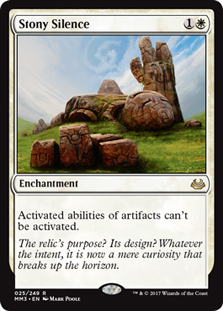

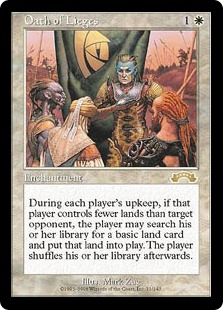
Oath of Lieges sets a rule, at least in my mind – that rule is “no one can ramp too far ahead of anyone else,” and thus, it undermines those players who just want to play a few ramp cards early in the game and start dropping haymakers prematurely while the rest of the table isn’t prepared. Oath of Lieges helps make sure the rest of the table actually is prepared, because no one gets left behind. Aura of Silence I am liking more here for the mana-taxing effect than the option to get a Disenchant; sure, that’s nice, but the slowdown effect will prove more valuable overall than the spot removal as far as our plan is concerned. And Martyr’s Bond is here just as a strong card that will help prevent opponents from getting too far ahead of us – killing our creatures will cut down some of everyone else’s, which prevents us from getting too outclassed just because we’re playing two-drops and they’re dropping sixes and sevens.
The last two need no explanation, as they’re just insanely powerful hosers that work against things we see all the time in Commander. Just don’t forget to put your Divining Top back on top of the deck and shuffle it away with a fetchland first, because that would be sad.
Putting it all together, we get the following deck:
Creatures (35)
- 1 Eight-and-a-Half-Tails
- 1 Patron of the Kitsune
- 1 Samurai of the Pale Curtain
- 1 Preacher
- 1 Blinding Angel
- 1 Weathered Wayfarer
- 1 Windborn Muse
- 1 Kataki, War's Wage
- 1 Nullstone Gargoyle
- 1 Spelltithe Enforcer
- 1 Jotun Grunt
- 1 Voidstone Gargoyle
- 1 Aven Mindcensor
- 1 Seht's Tiger
- 1 Mirror Entity
- 1 Ethersworn Canonist
- 1 Emeria Angel
- 1 World Queller
- 1 Admonition Angel
- 1 Lodestone Golem
- 1 Deathless Angel
- 1 Linvala, Keeper of Silence
- 1 Serra Ascendant
- 1 Leonin Arbiter
- 1 Sunblast Angel
- 1 Chancellor of the Annex
- 1 Thalia, Guardian of Thraben
- 1 Avacyn, Angel of Hope
- 1 Angel of Jubilation
- 1 Spirit of the Labyrinth
- 1 Soul of Theros
- 1 Hushwing Gryff
- 1 Avacyn, Guardian Angel
- 1 Angel of the Dire Hour
- 1 Containment Priest
Lands (37)
- 1 Strip Mine
- 1 Thawing Glaciers
- 1 Kor Haven
- 1 Eiganjo Castle
- 1 Windswept Heath
- 1 Flooded Strand
- 15 Snow-Covered Plains
- 1 Winding Canyons
- 1 Dust Bowl
- 1 Miren, the Moaning Well
- 1 Mouth of Ronom
- 1 Scrying Sheets
- 1 Terramorphic Expanse
- 1 Windbrisk Heights
- 1 Bant Panorama
- 1 Esper Panorama
- 1 Naya Panorama
- 1 Arid Mesa
- 1 Emeria, the Sky Ruin
- 1 Marsh Flats
- 1 Evolving Wilds
- 1 Mystifying Maze
- 1 Myriad Landscape
Spells (27)
- 1 Sensei's Divining Top
- 1 Sacred Mesa
- 1 Enlightened Tutor
- 1 Swords to Plowshares
- 1 Sol Ring
- 1 Null Rod
- 1 Aura of Silence
- 1 Mobilization
- 1 Crucible of Worlds
- 1 Oblation
- 1 Sunstone
- 1 Tariff
- 1 Oath of Lieges
- 1 Lashknife Barrier
- 1 Cover of Winter
- 1 Dawn Charm
- 1 Akroma's Memorial
- 1 Austere Command
- 1 Mass Calcify
- 1 Lapse of Certainty
- 1 Path to Exile
- 1 Expedition Map
- 1 Martyr's Bond
- 1 Stony Silence
- 1 Rootborn Defenses
- 1 Rest in Peace
- 1 Spirit Bonds

…And Jazal Goldmane will do good work for us beating down at the helm of a solid team, hopefully without becoming the derivative and boring “generic powerful white token-based commander” that everyone declined to write in about.
Join us next week when Jess starts to get to that backlog of non-Commander 2014-centric emails we’ve accumulated while working on this series, as we have quite a few potentially holiday-themed submissions we can pull from as we get into the spirit of the season…
Want to submit a deck for consideration to Dear Azami? We’re always accepting deck submissions to consider for use in a future article, like Adam and E’s Ghoulcaller Gisa deck or Remco and Aren’s Titania, Protector of Argoth deck. Only one deck submission will be chosen per article, but being selected for the next edition of Dear Azami includes not just deck advice but also a $20 coupon to StarCityGames.com!
Email us a deck submission using this link here!
Like what you’ve seen? Feel free to explore more of Dear Azami here, in the Article Archives! Feel free to follow Sean on Facebook… sometimes there are extra surprises and bonus content to be found over on his Facebook Fan Page, as well as previews of the next week’s column at the end of the week!
And feel free to check Jess’s own Command of Etiquette column on Hipsters of the Coast for more Commander and casual content.

